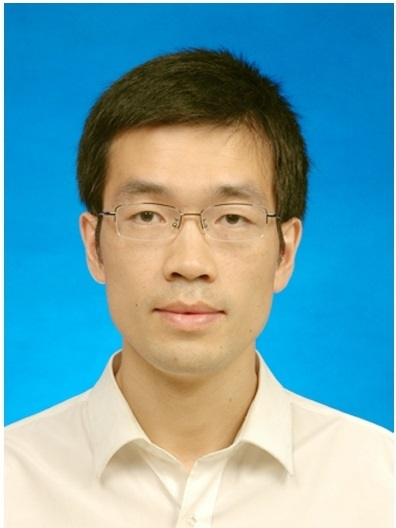人物經歷
教育經歷
工作實踐經歷
主要學術兼職
美國電氣和電子工程師協會(IEEE)會員
中國計算機學會會員
國家自然科學基金通信評審專家
《Analytical Cellular Pathology》編委
第13屆IFOST國際會議分會主席
IEEE Signal Processing Letters, IEEE Trans. On ASLP, Information Sciences
Neurocomputing, Digital Signal Processing 等著名期刊審稿人
主要成就
學術論文
[1]Zhang Lejun, Zhang Tong Wang Jin, Yongjun He*,The research on social networks public opinion propagation influence models and its controllability, China Communications, 15(07):108-120.
[2]An Efficient 3D Model Retrieval Method Based on Bo Ding, Lei Tang, and Yong-jun He*, Convolutional Neural Network, Complexity, Volume2020Article ID9050459, 2020.
[3]湯磊,丁博*,何勇軍,基於卷積神經網路的高效三維模型檢索方法,電子學報。
[4] Yongjun He, Deyun Chen, Jiqing Han, “Dictionary Evaluation and Optimization for Sparse Coding based Speech Processing,” Information Sciences, vol. 310, pp.77-96, 2015. (SCI, IF=3.893, A類)
[5] Yongjun He, Jiqing Han, Tieran Zheng, Guanglu Sun, “A new framework for robust speech recognition in complex channel environments,” Digital Signal Processing, vol 32, pp.109-123, 2014. (SCI, IF=1.982,A類)
[6] Yongjun He, Jiqing Han, “Gaussian specific compensation for channel distortion in speech recognition,” IEEE Signal Processing Letters, pp. 599-602, 2011. (SCI, IF=1.173,A類)
[7] Yongjun He, Guanglu Sun, Jiqing Han, “Spectrum enhancement with sparse coding for robust speech recognition,” Digital Signal Proessing, vol. 43, pp. 59-70. (SCI, IF=1.982,A類)
[8] Yongjun He, Guanglu Sun, Jiqing Han, “Optimization of learned dictionary for sparse coding in speech processing,” Neurocomputing, vol. 12, no. 2, pp. 567-575. (SCI, IF=2.01,A類)
[9] Yongjun He, An overlapping cell image synthesis method for imbalance data, Analytical cellular pathology 2018.07 (SCIIF=1.08)
[10] Yongjun He, The research on social networks public opinion propagation influence models and its controllability China Communications SCI,IF=1.5
[11] Yongjun He, Planetary gearbox fault diagnosis based on data-driven valued characteristic multigranulation model with incomplete diagnostic information,Journal of Sound and Vibration 2018.09,SCI,IF=2.59
[12] Yongjun He, One dictionary vs. two dictionaries in sparse coding based speech denoisingChinese Journal of Electronics,2017.03, SCI, IF=0.513
[13] Yongjun, He, Automatic Detection of Cervical Cancer Cells by a Two-Level Cascade Classification System.Analytical cellular pathology,2016.01, SCI,IF =1.08
[14] 何勇軍, 韓紀慶, “語音識別中頻寬失配的補償研究,” 計算機學報, pp. 1629-1637, 2011. (EI, 一級,A類).
[15] 何勇軍, 韓紀慶, “一種噪聲環境下畸變模型線性化處理的魯棒語音識別方法,” 通信學報, pp.8-14, 2010. (EI, 一級,A類)
[16] Yongjun He, Jiqing Han, “Compensation of partly reliable components for band-limited speech recognition with missing data techniques,” In Proc. ICASSP, 2011 pp. 5476-5479. (EI)
[17] Yongjun He, Jiqing Han, Shiwen Deng, “A solution to residual noise in speech denoising with sparse representation,” In Proc. ICASSP, Kyoto, JP, 2012:4653-4656. (EI)
[18] Yongjun He, Jiqing Han, “Model synthesis for band-limited speech recognition,” In Proc. Interspeech, 2010, pp. 558–561. (EI)
[19] Yongjun He, Jiqing Han, Guibin Zheng, “Evaluation of dictionary for sparse coding in speech processing,” in Proc. Inter speech, Singapore, 2014, pp. 1238-1241.
[20] 何勇軍,付茂國,孫廣路, 韓紀慶, “基於稀疏編碼的魯棒說話人識別,” 數據採集與處理, pp. 198-203, 2014.
[21] 何勇軍,付茂國,孫廣路, “語音特徵增強方法綜述,” 哈爾濱理工大學,pp. 123-130, 2014.
[22] Yongjun He, Jiqing Han, “A new robust LPCCS for speech recognition in channel distortion environments,” In Proc. IEEE ICMLC, 2009, pp. 2358–2362. (EI)
[23] 何勇軍,韓紀慶,“一種頻譜摺疊算法及其改進”, 全國人機語音通信學術會議, 2009, pp. 87–90.
科研項目
[1] 語音字典學習方法研究,類型:國家自然科學基金面上,金額:85萬元,起止:2017年1月-2021年12月,批准單位:國家自然科學基金委。
[2]細胞病理圖像分析系統,類型:哈爾濱市傑出青年人才基金,金額:45萬元,起止:2018.01-2020.07。
[3]人工智慧套用基礎研究,類型:橫向,金額:120萬元,起止:2018.08-2021.08。
[4] 基於稀疏編碼的語音特徵增強方法研究,類型:國家自然科學青年基金,金額:25萬元,起止:2014年1月-2016年12月,批准單位:國家自然科學基金委。
[5] 時變噪聲環境下的魯棒語音特徵提取方法研究,類型:教育部博士點專項基金,金額:5萬元,起止:2013年1月-2014年12月,批准單位:教育部。
[6] 基於稀疏編碼的魯棒語音特徵提取方法研究,類型:黑龍江省博士後基金,金額:5萬元,起止:2013年1月-2014年12月,批准單位:黑龍江省博士後管理辦公室。
[7] 基於稀疏編碼的魯棒語音特徵提取研究項目,金額:5萬元,鑑定單位:中國博士後基金委員會,結題時間:2014年7月,批准單位:中國博士後基金委員會。
[8] 智慧型語音門禁系統特徵提取模組,金額:50萬元,起止:2013年12月-2015年3月,批准單位:黑龍江世倬智慧型系統集成有限公司。
發明專利及軟著
(1)何勇軍,電子商務安全在雲計算環境下的套用研究,西北工業大學出版社,2015年8月;
(2)語音識別環境失配補償研究,科學出版社,2018.05;
(3)細胞病理圖片自動閱片系統關鍵技術,科學出版社, 2018.05。
人才培養
每年指導碩士研究生5~8名,博士研究生1~2名。
團隊介紹
人工智慧研究中心,中心成立於2018年6月,占地面積150m2,是一個以人工智慧理論研究和技術套用為主題的實驗室。科研條件一流,擁有深度學習伺服器3台(每台4四塊2080TI GPU),企業級伺服器集群(9節點),海量語音、圖像和文本等人工智慧數據,15個人工智慧系統及相關的硬體設施,是一個研究技術和培養人才的創新平台。實驗室的師資力量雄厚,包括教授3名,博士生導師2名,副教授3名,全部具有海外留學經歷。老師們培養人才不計付出,具有奉獻精神。研究中心以培養人才、學以致用、科學探索為使命。研究方向分布在人工智慧的各個領域,具體包括語音信號處理中的語音識別、語音增強、說話人識別、音頻檢索、音頻場景識別;圖像處理中的缺陷檢測、分割、識別、數據挖掘;文本處理中的文本分類、意圖識別、實體提取、語言生成、知識圖譜等。實驗室擁有7個主要項目均有省級以上基金支持,分別為病理智慧型診斷系統、智慧型服務機器人、包裝盒印刷缺陷檢測系統、風機智慧型巡檢系統、農機自動駕駛系統、飛機發動機震動檢測系統、三維模型檢索系統。為人才的培養提供了保障。

